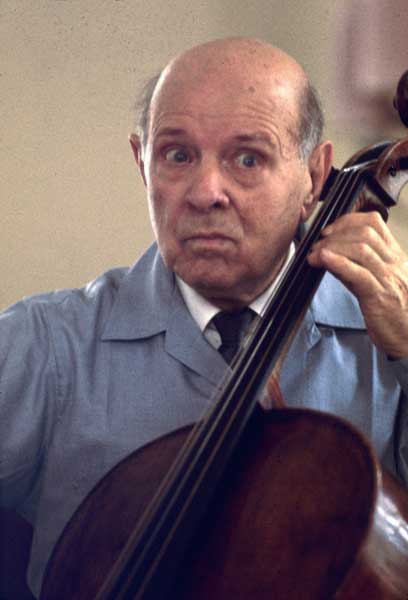The Cello Suites, By Eric Siblin

Eric Siblin is in many ways just the kind of listener whom musicians love to find in their audiences: an open-minded voyager who's trying something new. JS Bach's cello music entered his life "by chance" shortly after he had ended a stint as pop music critic for the Montreal Gazette, "a job that had filled my head with vast amounts of music, much of which I didn't want to be there".
Despite his reservations about "the shroud of stuffiness" which surrounds classical concerts, he ventured out one night to hear Lawrence Lesser play Bach's solo cello suites. This was the very opposite of the electronic roar which had alienated him at a U2 gig. Instead, he heard the solitary, uncompromising voice of old Bach emanating from a simple wooden cello. To his own surprise, he was mesmerised. "What was coming out of those sound holes was music more earthy and ecstatic than anything I'd ever heard."
It was love at first sight, and he set off to bond with Bach's cello suites in any way he could, from historical research to taking up the cello himself. He was intrigued to hear that Bach's manuscripts are lost. Tantalisingly, Siblin holds out the prospect that he might track them down, but this sub-plot fizzles out without dénouement. The "search for a baroque masterpiece" of the sub-title is really more about his exploration of why he felt so powerfully drawn to these self-contained 18th-century masterpieces.
He discovered that they were largely neglected until, in 1890, the teenage Pablo Casals discovered an edition in a backstreet Barcelona music shop. Casals had the imagination and skill to realise the music's greatness, but he hesitated for 12 years before performing it in public. Today's cellists still treat the Bach Suites as a pinnacle of their art. Recording all six when he was 63, Rostropovich remarked that he couldn't forgive himself for daring to record one 40 years earlier. With its extraordinarily vivid sense of "speaking" the music, Casals's 1940s recording remains the benchmark for many, and in honour of this achievement Siblin weaves Casals's life into the book in counterpoint to Bach's. What makes this music so fascinating? The excerpts in the book show that many of the movements consist largely of recurring patterns. Yet within these slowly shifting patterns are contours subtly delineated and interior drama patiently revealed. There are no tempo or expression marks, thus forcing players to engage minutely with the material. Each cellist views Bach through a particular lens: the "historically accurate" approach; the soulful Romantic; the tossing-of-curly-locks egotistical; the "Johann Sebastian meets Jimi Hendrix" approach. Bach's inscrutable notes invite discovery and yet resist permanent solution.
Siblin casts his book in 36 short chapters to reflect the six dance movements of the six Suites. There are three protagonists: each literary "suite" contains three little chapters about Bach, two about Casals and one about the author, a format which feels a little contrived. Casals gradually emerges as having gripped Siblin's imagination more than "old periwig" Bach did. This is understandable because, as he points out, we know very little juicy detail about Bach's personal life.
Siblin sympathetically fills in all the blanks he can. But sometimes he seems to suspect Bach of being the kind of unfashionable person whose reluctance to "modernise" set the tone for today's classical music lovers. Siblin isn't complimentary about them, calling them elderly, stuffy and formal. He values the music, but can't see the point of listening in silence, even though without silence this kind of music would be inaudible.
"Classical concert setups are going to have to get with the program of the 21st century... if younger music fans are ever going to shuffle Bach alongside Bono, Beck and Björk on their digital playlists," he warns. The irony is that had old Bach "got with the program" back in the 18th century and abandoned his intricate, gravely beautiful counterpoint for the lighter, cheerier style that his sons favoured, his music wouldn't have had the depth or integrity that captivated Siblin two and a half centuries later.
Susan Tomes's new book, 'Out of Silence: a pianist's yearbook', is published by Boydell Press in March
Subscribe to Independent Premium to bookmark this article
Want to bookmark your favourite articles and stories to read or reference later? Start your Independent Premium subscription today.

Join our commenting forum
Join thought-provoking conversations, follow other Independent readers and see their replies